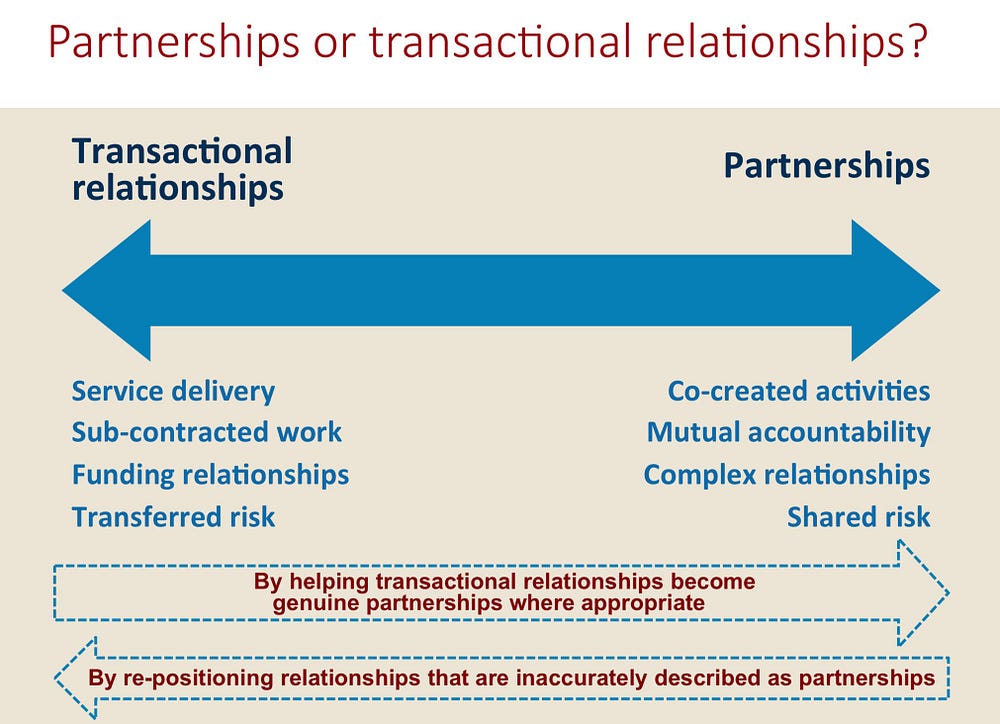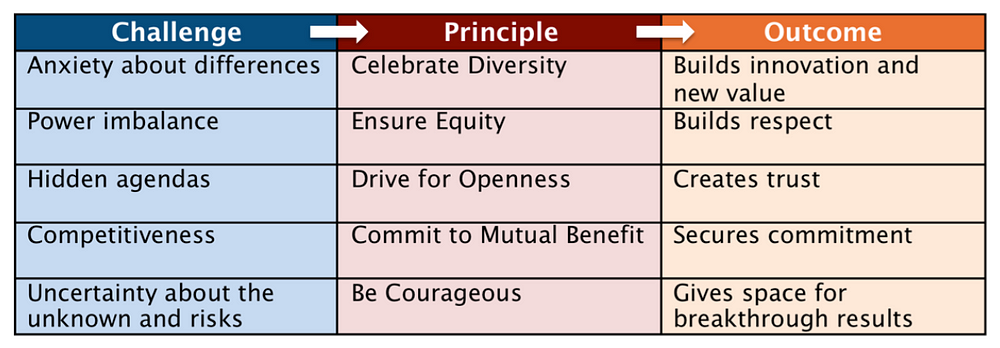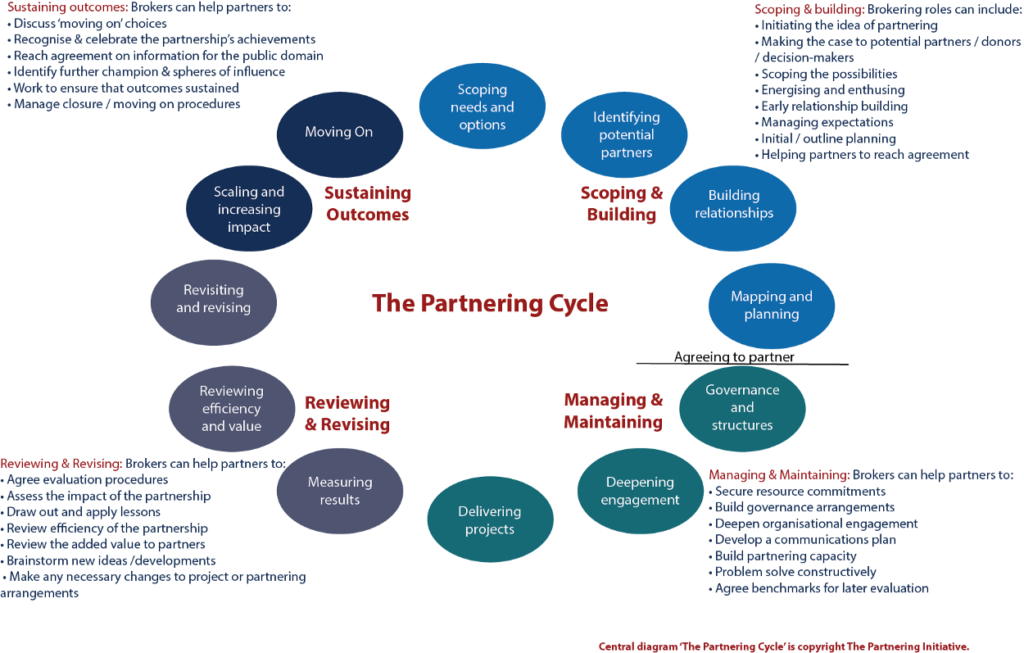Tackling climate change effectively requires strong partnerships within and across all sectors. But many organizations find that building lasting, trust-based collaborations isn’t easy. To help increase partnership building capacity in the Greater Toronto and Hamilton Area and beyond, TAF VP Mary Pickering recently co-facilitated a four-day training session with the Partnership Brokers Association. One of the participants was John Kenney, Manager for Social Innovation at Natural Resources Canada. Here are some of his takeaways.
We need partnerships
We humans have done some incredible things together, but we have also created some entrenched systems, ways of working, and problems along the way. There is no individual actor or organization that has the knowledge, expertise, and approaches to effectively address complex challenges such as climate change. We need to work together to create a more inclusive and sustainable world. That’s easier said than done.
We don’t need partnerships for everything we do. Other ways of working can be appropriate and productive when the timing, context and needs require them. But if you’re like me and work on complex challenges, there’s a good chance you need partners.
Partnerships are different than other working arrangements
According to the Partnership Brokers Association, a partnership is defined as an on-going working relationship where risks and benefits are shared. Additionally, partners:
- Co-create purpose and activities;
- Contribute different resources and assets; and
- Commit to shared accountability.
Of course, there are different types of partnerships, including policy, public-private, and multi-stakeholder partnerships.
From transactional to transformational
Prior to the course, we were asked to reflect on our own partnership experiences and to place them along the continuum below.

I placed our team’s energy efficiency collaboration with our colleagues, Alberta CoLab and a City of Edmonton team on the right side of the continuum. We came together and created a shared purpose. Each partner brought people, resources and assets to the table that the other partners valued. We all had skin in the game and co-created outcomes.
I reflected on other initiatives too that weren’t really partnerships. We often default to transactional relationships. Our systems, behaviours, and ways of working can reinforce them even when we may desire and strive to work together in more collaborative ways.
There are a number of challenges that can get in the way. Addressing them requires putting principles into practice that drive partnerships and realize outcomes.

We undervalue the capacity required for partnerships
As mentioned in Cutting Through the Complexity: A Roadmap for Effective Collaboration, “While extensive resources exist online to support collaborative efforts, the fact remains that we human beings are simply not very good at making ‘we’ work.” That’s where partnership brokers come in.
“A partnership broker is an active ‘go-between’ who supports partners in navigating their collaboration journey by helping them to create a map, plan their route, choose their mode of transport and change direction when necessary. They can both ‘serve’ and ‘lead’ as the situation requires and as needs of the partnership change over time.” — Partnership Brokers Association
A partnership broker can wear multiple hats depending on the context and needs of the partnership, such as coach, facilitator, negotiator, evaluator and mediator.
Do you or others you work with play roles like this for projects requiring collaboration? Sometimes one of the partners plays a brokering-like role off the corner of their desk or in a less structured way. Other times, the brokering function is not recognized as needed, so people work together transactionally, or the partnership struggles along, possibly falls apart, and, collectively, we underperform.
Our Social Innovation Unit plays a brokering role, both internally and externally. I can now see ways and areas where we can improve and apply our practice to strengthen our organization’s partnership capacity. There may also be circumstances where a neutral party may be better positioned to broker arrangements given our work in a federal department.
Partnerships typically have a life cycle, which is distinct from a conventional project management cycle. The focus of the brokering role is on building and sustaining a well-functioning and impactful partnership.
A partnership itself can be complex. It involves people and organizations with different perspectives, ways of working, and interests. So the “steps” and functions below are not necessarily linear. They can be adapted to suit the context. There are different tools and methods associated with each phase.

An experienced partnership broker can help to build collective awareness of the context and shape its interventions accordingly.
Partnerships are needed to make 1+1=3
What’s needed in partnerships is alignment among partners, not necessarily consensus. Asset mapping can enable potential partners to see what they each bring to the table that others likely value, and how those assets could be used for collective impact.
John Kenney works for Natural Resources Canada as the Manager for Social Innovation, Office of Energy Efficiency. He collaborates with people in- and outside of government on ways to advance energy efficiency at home, at work and on the road. This blog post was originally published on medium.com. Follow John on Twitter at @JohnRKenney.
To learn more about the next partnership brokering session, check out this brochure or come out to an information session on Friday, July 13, 2018. Please contact Mary Pickering for more information.
